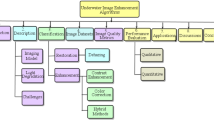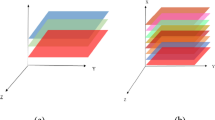Abstract
The imaging principle of seismic images is different from natural images, which results in very limited resolution, complex reflection features and strong uncertainty of seismic images. The fault interpretation methods based on seismic attribute analysis have been widely applied in the industry. However, the seismic attribute has inherent limitations and strong multiplicity. In order to overcome the limitations and multiplicity, a method for fault identification based on seismic attributes attention is proposed to enhance the expression ability of seismic multi-attributes fusion in fault identification tasks. Specifically, the fault identification model is proposed to achieve multi-objective joint prediction by fusing seismic multi-attributes. The seismic attributes attention mechanism named Fault-Attri-Attention is proposed to adaptively extract seismic attributes attention according to the difference in contributions of seismic attributes to fault identification tasks, which can obtain the optimal seismic multi-attributes fusion output. The multi-scales TransBlock module is proposed to enhance the feature expression of seismic attributes with different scales. Experimental results show that the fault identification method based on seismic attributes attention can achieve complementary multi-scales features information, which ensures the independence of seismic attributes and the integrity of multivariate information.











Similar content being viewed by others
Data availability
The datasets generated during and/or analyzed during the current study are available from the corresponding author on reasonable request.
References
Wu X, Fomel S (2018) Automatic fault interpretation with optimal surface voting. Geophysics 83(5):O67–O82
Geng Z, Wang Y (2020) Physics-guided deep learning for predicting geological drilling risk of wellbore instability using seismic attributes data. Eng Geol 279:105857
Lyu B, Qi J, Sinha S et al. (2020) Improving fault delineation using maximum entropy multispectral coherence. Interpretation 8(4):1–76
Sergius D, Jan W, Andreas H et al. (2021) Categorizing and correlating diffractivity attributes with seismic reflection attributes using auto-encoder networks. Geophysics 85(4):59–70
Chopra S, Marfurt K J (2005) Seismic Attributes-A Historical Perspective. Geophysics 70(5): 3SO-28SO
Shafiq MA, Alshawi T, Long Z et al. (2016) Salsi: A new seismic attribute for salt dome detection. IEEE Int Conf Acoust Speech Signal Process 14:1876–1880
Wang S, Yuan S, Yan B et al. (2016) Directional complex-valued coherence attributes for discontinuous edge detection. J Appl Geophys 129:1–7
Lou Y, Zhang B, Wang R et al. (2019) Seismic fault attribute estimation using a local fault model. Geophysics 84(4):73–80
Di H, Shafiq MA, Wang Z et al. (2019) Improving seismic fault detection by super-attribute-based classification. Interpretation 7(3):1–56
Di H, Alregib G (2019) Semiautomatic fault/fracture interpretation based on seismic geometry analysis. Geophys Prospect 67(5):1379–1391
Laake A (2013) Structural interpretation in color: A new RGB processing techniques for extracting geological structures from seismic data. SEG Technical Program Expanded Abstracts 1472-1476
Wang Z, Temel D, AlRegib G (2014) Fault detection using color blending and color transformations. IEEE Global Conference on Signal and Information Processing 999-1003
Chen C, He X, Guo B et al. (2020) A pixel-level fusion method for multi-source optical remote sensing image combining the principal component analysis and curvelet transform. Earth Sci Inform 13:1005–1013
Su M, Liu Y, Xue Y et al. (2021) Detection method of karst features around tunnel construction by multi-resistivity data-fusion pseudo-3D-imaging based on the PCA approach. Eng Geol 28:106–127
Marzieh M, Hosein H (2022) Semi-supervised fuzzy clustering for facies analysis using extended elastic impedance seismic attributes. Geophysics 87(4):75–84
Mohamed IA, Hemdan M, Hosny A et al. (2019) High-resolution water-saturation prediction using geo-statistical inversion and neural network methods. Interpretation 7(2):1–40
Odoh BI, Ilechukwu JN, Okoli NI (2014) The use of seismic attributes to enhance fault interpretation of OT field, Niger delta. Int J Geosci 5:826–834
Di H, Shafiq A, AlRegib G (2017) Seismic fault detection based on multi-attribute support vector machine analysis. SEG Technical Program Extended Abstracts: 2039-2044
Chen J, Lu Y, Yu Q, et al. (2021) TransUNet: transformers make strong encoders for medical image segmentation. Comput Vis Patt Recogn
Zheng S, Lu J, Zhao H, et al (2021) Rethinking semantic segmentation from a sequence-to-sequence perspective with transformers[C]. Comput Vis Patt Recogn 6877-6886
He X, Zhou Y, Zhao J et al (2022) Swin transformer embedding UNet for remote sensing image semantic segmentation. IEEE Trans Geosci Remote Sens 60:1–15
Pu M, Huang Y, Liu Y, et al (2022) EDTER: edge detection with transformer. IEEE/CVF Conf Comput Vis Patt Recogn 1392-1402
Saad OM, Bai M, Samy L et al (2021) Self-attention deep image prior network for unsupervised 3D seismic data enhancement. IEEE Trans Geosci Remote Sens 60:1–14
Wang D, Yang R (2023) P-Swin: Parallel Swin transformer multi-scale semantic segmentation network for land cover classification. Computers and Geosciences 175:105340
Guo M, Liu Z, Mu T et al (2022) Beyond self-attention: external attention using two linear layers for visual tasks. IEEE Trans Pattern Anal Mach Intell 45(5):5436–5447
Lin L, Zhong Z, Cai Z et al (2022) Automatic geologic fault identification from seismic data using 2.5D channel attention U-net. Geophysics 4:87
Hu J, Shen L, Albanie S et al (2020) Squeeze-and-excitation networks. IEEE Trans Pattern Anal Mach Intell 42(8):2011–2023
Jaderberg M, Simonyan K, Zisserman A, et al (2015) Spatial transformer networks. The 28th International Conference on Neural Information Processing Systems 2: 2017-2025
Qu Y, Xia M, Zhang Y (2021) Strip pooling channel spatial attention network for the segmentation of cloud and cloud shadow. Comput Geosci 157:104940
Zhang Z, Lin Z, Xu J et al (2021) Bilateral attention network for RGB-D salient object detection. IEEE Trans Image Process 30:1949–1961
Li G, Li L, Zhang J (2022) BiAttnNet: Bilateral attention for improving real time semantic segmentation. IEEE Signal Process Lett 29:46–50
Wu X, Liang L, Shi Y et al (2019) FaultSeg3D: using synthetic datasets to train an end-to-end convolutional neural network for 3D seismic fault segmentation. Geophysics 2019:1–36
Li W, Yue D, Wang W et al (2019) Fusing multiple frequency-decomposed seismic attributes with machine learning for thickness prediction and sedimentary facies interpretation in fluvial reservoirs. J Petrol Sci Eng 177:1087–1102
Dell S, Walda J, Hoelker A et al (2021) Categorizing and correlating diffractivity attributes with seismic reflection attributes using auto-encoder networks. Geophysics 85(4):59–70
Wang X, Zhang B, Zhao T et al (2017) Facies analysis by integrating 3D seismic attributes and well logs for prospect identification and evaluation-A case study from Northwest China. Interpretation 5(2):SE61–SE74
Li W, Yue D, Wu S et al (2019) Characterizing meander belts and point bars in fluvial reservoirs by combining spectral decomposition and genetic inversion. Marine Petrol Geol 105:168–184
Yue D, Li W, Wang W et al (2019) Fused spectral-decomposition seismic attributes and forward seismic modelling to predict sand bodies in meandering fluvial reservoirs. Marine Petrol Geol 99:27–44
Zeng H (2010) Geologic significance of anomalous instantaneous frequency. Geophysics 75(3):P23–P30
Li W, Yue D, Wu S et al (2020) Thickness prediction for high-resolution stratigraphic interpretation by fusing seismic attributes of target and neighboring zones with an SVR algorithm[J]. Marine Petrol Geol 113:104153
Maleki M, Davolio A, Schiozer DJ (2019) Quantitative integration of 3D and 4D seismic impedance into reservoir simulation model updating in the Norne Field. Geophys Prospect 67(1):167–187
Li W, Yue D, Colombera L et al (2021) Quantitative prediction of fluvial sandbodies by combining Seismic sttributes of neighboring zones. J Pet Sci Eng 196:107749
Wei X, Zhang C, Kim SW et al (2022) Seismic fault detection using convolutional neural networks with focal loss. Comput Geosci 158:104968
Li X, Li K, Xu Z et al (2023) Fault-Seg-Net: a method for seismic fault segmentation based on multi-scale feature fusion with imbalanced classification. Comput Geotech 158:105412
Li X, Li K (2022) Imbalanced data classification based on improved EIWAPSO-AdaBoost-C ensemble algorithm. Appl Intell 52:6477–6502
Lin TY, Goyal P, Girshick R et al (2017) Focal loss for dense object detection. IEEE Int Conf Comput Vis 2017:2999–3007
Li X, He M, Li H et al (2022) A combined loss based multi-scale fully convolutional network for high-resolution remote sensing image change detection. IEEE Geosci Remote Sens Lett 19:1–5
Mohammed N N, Mohammed C J (2021) Enhanced Determination of Gene Groups Based on Optimal Kernel PCA with Hierarchical Clustering Algorithm. 2021 55th Annual Conference on Information Sciences and Systems
Song Z, Yuan S, Li Z et al (2022) KNN-based gas-bearing prediction using local waveform similarity gas-indication attribute: An application to a tight sandstone reservoir. Interpretation 1:10
Amir I, Hatem FE, Sahar N (2022) Gas channels and chimneys prediction using artificial neural networks and multi-seismic attributes, offshore West Nile Delta Egypt. J Pet Sci Eng 208:109349
Bin K, Long Y, Tong X, et al (2022) Ground moving target detection with seismic fractal features. IEEE Geosci Remote Sens Lett. 19
Dou Y, Li K, Zhu J et al (2021) Attention based 3D seismic fault segmentation yraining by a few 2D slice labels. IEEE Trans Geosci Remote Sens 99:1–15
Trebing K, Stanczyk T, Mehrkanoon S (2021) SmaAt-UNet: Precipitation nowcasting using a small attention-UNet architecture. Pattern Recogn Lett 145:178–186
Gao K, Huang L, Zheng Y et al (2022) Automatic fault detection on seismic images using a multiscale attention convolutional neural network. Geophysics 1:87
Sandler M, Howard A, Zhu M et al (2018) Mobilenetv 2: Inverted residuals and linear bottlenecks. IEEE Conf Comput Vis Pattern Recogn 2018:4510–4520
Ma N, Zhang X, Zheng HT et al. (2018) ShufflenetV2: Practical guidelines for efficient cnn architecture design. Eur Conf Comput Vis 2018:116–131
Li G, Yun I, Kim J, Kim J (2019) DABNet: Depthwise asymmetric bottleneck for real-time semantic segmentation. 2019 British Machine Vision Conference
Yu C, Gao C, Wang J. et al. (2021) BiSeNetV2: Bilateral network with guided aggregation for real-Time semantic segmentation. Int J Comput Vis. 3051-3068
Oktay O, Schlemper J, Folgoc L L, et al. (2018) Attention U-Net: learning where to look for the pancreas. 2018 Computer Vision and Pattern Recognition
Acknowledgements
The authors are very indebted to the anonymous referees for their critical comments and suggestions for the improvement of this paper. This work was also supported by the major project of National Natural Science Foundation of China (No.51991365), the Natural Science Foundation of Shandong Province of China (No.ZR2021MF082).
Author information
Authors and Affiliations
Corresponding author
Ethics declarations
Conflict of interest
No potential conflict of interest was reported by the authors.
Additional information
Publisher's Note
Springer Nature remains neutral with regard to jurisdictional claims in published maps and institutional affiliations.
Rights and permissions
Springer Nature or its licensor (e.g. a society or other partner) holds exclusive rights to this article under a publishing agreement with the author(s) or other rightsholder(s); author self-archiving of the accepted manuscript version of this article is solely governed by the terms of such publishing agreement and applicable law.
About this article
Cite this article
Li, X., Li, K. Fault-attri-attention: a method for fault identification based on seismic attributes attention. Neural Comput & Applic 36, 3645–3661 (2024). https://doi.org/10.1007/s00521-023-09265-7
Received:
Accepted:
Published:
Issue Date:
DOI: https://doi.org/10.1007/s00521-023-09265-7




